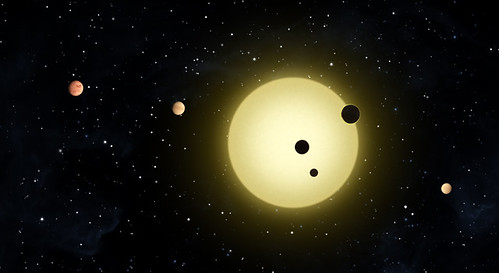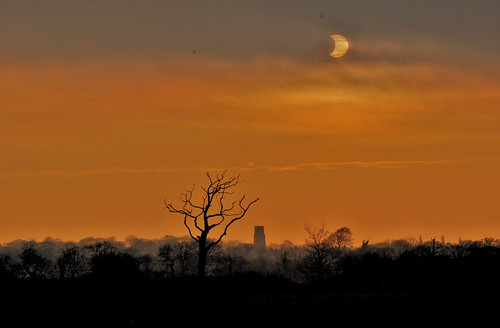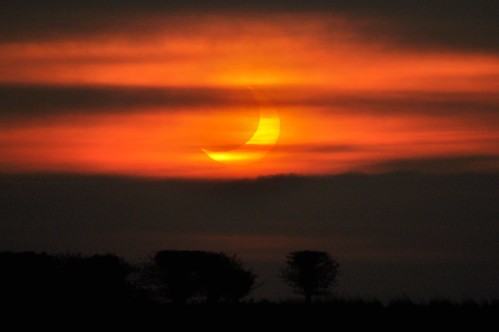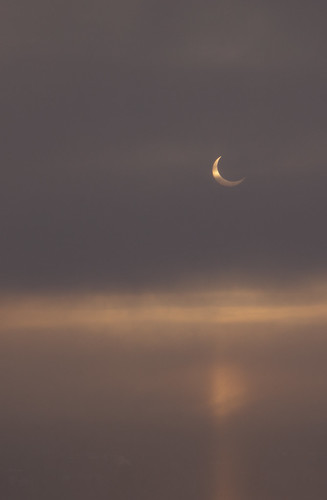Awesomeness Round-up – 2/7/11
- By Maggie Masetti
- February 7, 2011
- 2 Comments
Check out this amazingly cool orrery, created by the creative director, of Dynamic Diagrams, Piotr Kaczmarek. It shows the motion of the planets in our solar system. You can change it by setting the date, and you can speed it up or slow it down! You can even click on the lower right hand-corner and change it from the Copernican view to the earth-centric Tychonian view! (Be sure to try tracing the planets orbits in this view!) What a cool app! (BTW, if you can’t see it, it’s because it’s Flash.) Here’s a direct link to the orrery flash file.
Geeked On Goddard also reports that NASA’s twin STEREO spacecraft reached opposite sides of the sun so for the first time in human history, we can see the entire star at the same time. It’s taken quite a bit of orbital maneuvering to get here since STEREO launched in late 2006.
Geeked On Goddard covered the news out of JPL that NASA’s Kepler mission has “discovered its first Earth-size planet candidates and its first candidates in the habitable zone, a region where liquid water could exist on a planet’s surface. Five of the potential planets are near Earth-size and orbit in the habitable zone of smaller, cooler stars than our sun.” Check out the links for more information!
Image credit: NASA/Ames/JPL-Caltech
Now we’ve got some older links that we’d saved up and then not had time to post between AAS and the week-long outage a lot of our ASD sites had that week!
Popular Science had an article about how the Advanced Visualization Lab at NCSA, University of Illinois creates science visualizations.
Here’s one example of what they’ve created:
While we were at AAS, there was some excitement over the zodiac and whether or not your astrological sign would be changing. Apparently astronomer Parke Kunkle made comments in an interview with the Minneapolis-St.Paul Star Tribune that the sun passes through thirteen constellations, not just twelve. Missing is Ophiuchus – but this is not new information. The Babylonians purposely left it out of the zodiac thousands of years ago (twelve being a more auspicious number than thirteen).
Kunkle also explained that because of the Earth’s wobble about its axis (what astronomers call precession) that “when [astrologers] say that the sun is in Pisces, it’s really not in Pisces.” This isn’t news to astronomers either.
We tried to work up some righteous indignation over the fact that this went viral, but never seemed to have the time to really vent our spleens over it. Plus lots of other people have done the work for us, so we thought we’d just link to some of the best.
- Professor Astronomy tries to make this a “teachable moment” and explains the constellations, the zodiac, precession, Ophiuchus, and more. (Full disclosure, he’s the college friend I mentioned in my blog entry about AAS.)
- Phil Plait talks about this astrological “news” and then explains why astrology is bogus.
We’re not sure who at NASA picked this, but supposedly some undisclosed group decided these were the best and worst science movies out there. This is a topic near and dear to our hearts, and we’ve both blogged and podcasted about it!
Check out this absolutely gorgeous set of partial solar eclipse pictures from early January.
Here’s a few of them, but they’re all amazing!
Boston.com’s “The Big Picture” is famous for collecting awesome photography. They have some terrific eclipse photos as well.
Also check out this time-lapse photography in video format by Phil Evans:
A Canadian girl, 10-year-old Kathryn Gray, became the youngest person to discover a supernova.







[…] This post was mentioned on Twitter by NASA Blueshift, Webb Telescope and Lovely Rita, Lights in the Dark. Lights in the Dark said: RT @NASAblueshift: Newest round-up with lots of astro-links – astronomy, astrometry, astrology, and more! http://bit.ly/hKi35J […]
Flash of the motion of the planets in our solar system looks very good. Thanks to Piotr Kaczmarek. Good job! :)